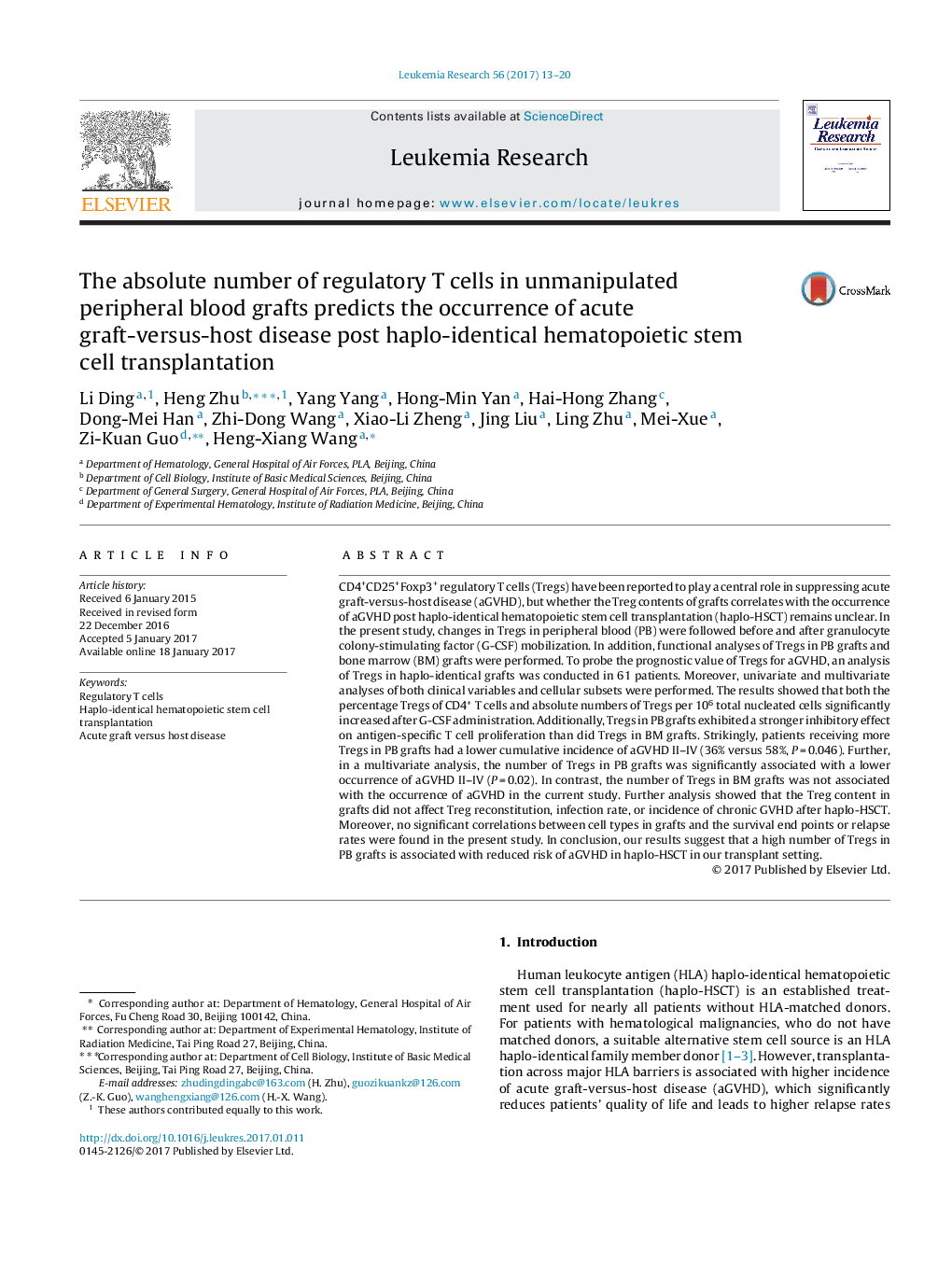| کد مقاله | کد نشریه | سال انتشار | مقاله انگلیسی | نسخه تمام متن |
|---|---|---|---|---|
| 5527818 | 1547892 | 2017 | 8 صفحه PDF | دانلود رایگان |

- Tregs in PB increased significantly after G-CSF administration.
- Tregs in PB exhibited a stronger inhibitory effect on T cell proliferation.
- A high number of Tregs in PB is associated with reduced risk of aGVHD in haplo-HSCT.
CD4+CD25+Foxp3+ regulatory T cells (Tregs) have been reported to play a central role in suppressing acute graft-versus-host disease (aGVHD), but whether the Treg contents of grafts correlates with the occurrence of aGVHD post haplo-identical hematopoietic stem cell transplantation (haplo-HSCT) remains unclear. In the present study, changes in Tregs in peripheral blood (PB) were followed before and after granulocyte colony-stimulating factor (G-CSF) mobilization. In addition, functional analyses of Tregs in PB grafts and bone marrow (BM) grafts were performed. To probe the prognostic value of Tregs for aGVHD, an analysis of Tregs in haplo-identical grafts was conducted in 61 patients. Moreover, univariate and multivariate analyses of both clinical variables and cellular subsets were performed. The results showed that both the percentage Tregs of CD4+ T cells and absolute numbers of Tregs per 106 total nucleated cells significantly increased after G-CSF administration. Additionally, Tregs in PB grafts exhibited a stronger inhibitory effect on antigen-specific T cell proliferation than did Tregs in BM grafts. Strikingly, patients receiving more Tregs in PB grafts had a lower cumulative incidence of aGVHD II-IV (36% versus 58%, PÂ =Â 0.046). Further, in a multivariate analysis, the number of Tregs in PB grafts was significantly associated with a lower occurrence of aGVHD II-IV (PÂ =Â 0.02). In contrast, the number of Tregs in BM grafts was not associated with the occurrence of aGVHD in the current study. Further analysis showed that the Treg content in grafts did not affect Treg reconstitution, infection rate, or incidence of chronic GVHD after haplo-HSCT. Moreover, no significant correlations between cell types in grafts and the survival end points or relapse rates were found in the present study. In conclusion, our results suggest that a high number of Tregs in PB grafts is associated with reduced risk of aGVHD in haplo-HSCT in our transplant setting.
Journal: Leukemia Research - Volume 56, May 2017, Pages 13-20